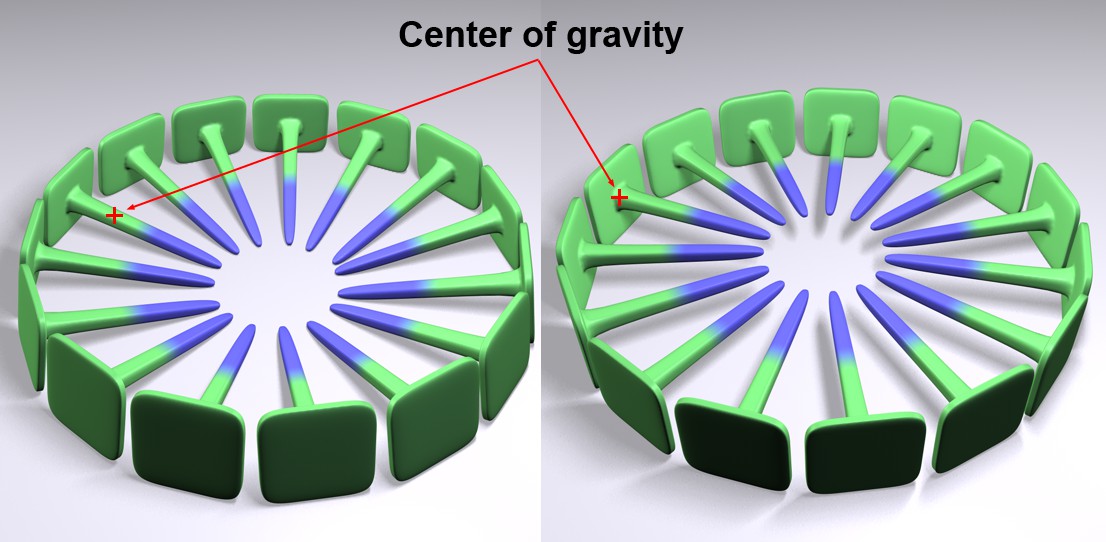Mass
Use this setting if you want to define a mass that is independent of the mass of the dynamic object.
The Density value in the Preference menu will be applied. The default Density value of 1 is programmed to assign a mass of 1 to a cube with a length of 100.
Define the desired density.
Use this value if you want to define a mass that is independent of the volume of the dynamic object.
The mass/density settings described above only affect linear movement and collisions. The Rotational Mass value on the other hand only affects the force required to rotate a clone. Very high values often result in clones barely being able to be rotated. Very low values allow objects to be rotated by the slightest collision..
A value of 100% will simulate an object whose mass is evenly distributed.
 At left the center of mass was calculated automatically at the actual center of mass; at right the nail's head was moved upward and the tip of the nail moved accordingly (gravity pulls at the Custom Center).
At left the center of mass was calculated automatically at the actual center of mass; at right the nail's head was moved upward and the tip of the nail moved accordingly (gravity pulls at the Custom Center).
By default (option disabled) the center of mass will automatically be calculated and all dynamic objects will behave realistically. If you want to define the center of mass manually, enable this option and enter the coordinates (with regard to the object's coordinate system) accordingly.
The center of mass is also the point at which restricted force fields start to affect clones/objects. If the center of mass lies outside of this field, no effect will take place.